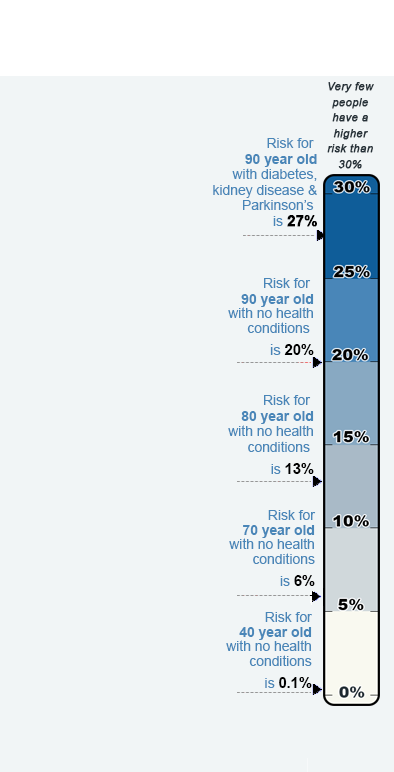
Some musings from me on risk perception/communication on BMJ blog today.
We throw numbers around when talking about health risks - they’re a way of precisely defining a concept. But it’s like communicating colour through hexademical codes or wavelengths…
bit.ly/32RzXSL
We throw numbers around when talking about health risks - they’re a way of precisely defining a concept. But it’s like communicating colour through hexademical codes or wavelengths…
bit.ly/32RzXSL
Firstly, the numbers only make sense to those already very familiar with the arbitrary mapping of number to concept. A designer or physicist might instinctively bring to mind a colour when you say 6d46c4 or 350nm, but the rest of us don’t.
Secondly, although the number defines precisely what colour we’re looking at, it doesn’t define what we perceive.
The circles below are both the same colour, but the context makes a difference to perception.
The circles below are both the same colour, but the context makes a difference to perception.

As does our individuality. What I perceive might be very different from what you do.
Thirdly, my emotional reaction to that colour is different again. Whether I ‘like’ it is personal and context-dependent. Am I considering it for a pair of trousers or paint for my bedroom wall?
Thirdly, my emotional reaction to that colour is different again. Whether I ‘like’ it is personal and context-dependent. Am I considering it for a pair of trousers or paint for my bedroom wall?
We understand that colour perception is a very subjective, emotional and context-dependent concept. So is risk.
We know that to form a good perception of a colour we need to see it under various lights and angles to avoid a skewed view.
So, too with risk.
We know that to form a good perception of a colour we need to see it under various lights and angles to avoid a skewed view.
So, too with risk.

When we communicate a risk, we need to do two things.
Firstly, we need to help people map our arbitrary scale of numbers to the subjective concepts of that particular risk that they have in their head. That means understanding how people think of that risk.
Firstly, we need to help people map our arbitrary scale of numbers to the subjective concepts of that particular risk that they have in their head. That means understanding how people think of that risk.
For COVID, we found people thought about risk in terms of personas: they imagined a person of a certain age and health when they thought about ‘high risk’ or ‘low risk’.
To help them translate between these mental personas and numbers, then, we created a scale (mock-up only)
To help them translate between these mental personas and numbers, then, we created a scale (mock-up only)

Secondly, though, we need to understand that presenting the risk to people one way is like showing them a colour under just one light. Changing from percentage to x-out-of-100, from number dying to surviving etc are like changing the lighting. They change perception of the risk.
A risk, then, is not a number. Telling people a number is very unlikely to transfer the concept to them and help them understand it. We need to help translation from their mental ‘spectrum’ for that particular risk to our number line, and to present the numbers in different ways.
And we need to accept that everyone can have a different perception of the same risk. It doesn’t mean they haven’t understood.
Which means it difficult to tell if we have communicated successfully, just as I can never tell what you ‘see’ when we look at the same colour
Which means it difficult to tell if we have communicated successfully, just as I can never tell what you ‘see’ when we look at the same colour
• • •
Missing some Tweet in this thread? You can try to
force a refresh


